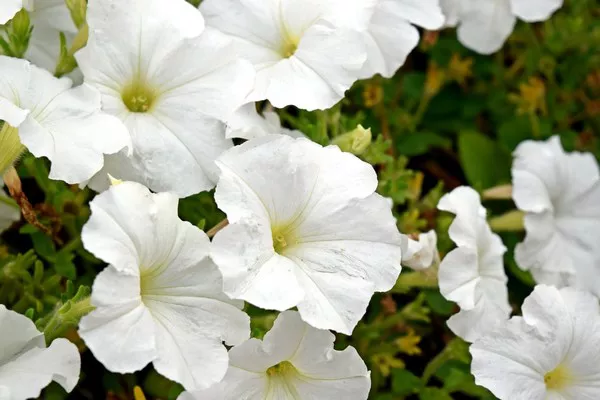In the vast and nuanced world of flora, flowers have long been revered for their ability to convey a myriad of emotions and sentiments. From joy and celebration to grief and sorrow, flowers serve as nature’s poetry, expressing what words alone often fail to capture. In this exploration, we delve into the realm of symbolism and delve into the question: What flowers represent sadness?
Historical Perspectives on Flower Symbolism
The language of flowers, also known as floriography, dates back centuries and has been an integral part of various cultures. During the Victorian era, in particular, flowers were employed to communicate sentiments that were often deemed too delicate or taboo to express openly. The keyword “flowers” reminds us that this symbolic language transcends time and continues to play a significant role in contemporary emotional expression.
Roses: Unraveling the Layers of Symbolism
While roses are renowned for their association with love and passion, certain colors and varieties are also linked to sadness. The keyword “flowers” prompts us to explore the subtle nuances within the rose family that convey melancholic emotions.
Blue Roses: Though not naturally occurring, blue roses have become a symbol of the unattainable and the mysterious. In the language of flowers, blue roses can represent the elusive nature of happiness, emphasizing the melancholy that often accompanies unfulfilled aspirations.
White Roses: While commonly associated with purity and innocence, white roses can also symbolize reverence and remembrance. In the context of sadness, white roses are often chosen to convey sympathy and acknowledgment of loss. The keyword “flowers” highlights the versatility of white roses in expressing a range of emotions, including the somber tones of grief.
Black Roses: Rare and captivating, black roses hold a unique place in floral symbolism. Often associated with the mysterious and the unknown, black roses can be chosen to convey a sense of farewell or the end of a chapter. The keyword “flowers” invites us to consider the darker hues of the floral palette as carriers of profound emotional messages.
Lilies: Elegance in Mourning
Lilies, with their graceful petals and subtle fragrance, are another group of flowers associated with expressions of sadness and loss. The keyword “flowers” directs our attention to the symbolic significance of lilies in the language of grief.
Calla Lilies: Known for their elegant, trumpet-shaped blooms, calla lilies are often chosen for funerals and memorial services. Their association with resurrection and rebirth adds a layer of hope to their symbolism, emphasizing the cycle of life even in the face of sorrow.
Casablanca Lilies: These large, fragrant lilies are linked to themes of celebration and remembrance. Their bold appearance and intense fragrance make them a poignant choice for expressing condolences. The keyword “flowers” highlights the role of Casablanca lilies in conveying a sense of reverence and respect in moments of sadness.
Chrysanthemums: An Emblem of Grief
Chrysanthemums, commonly known as mums, have deep-rooted cultural associations with death and mourning in many East Asian cultures. The keyword “flowers” guides us through the symbolism attached to chrysanthemums in various traditions.
White Chrysanthemums: In many Asian cultures, white chrysanthemums are closely linked to expressions of grief and are often used in funeral arrangements. The keyword “flowers” emphasizes the cultural significance of these blooms in conveying a sense of loss and mourning.
Red Chrysanthemums: While red is typically associated with vibrancy and passion, red chrysanthemums can symbolize deep love and loyalty in the face of loss. The keyword “flowers” prompts us to explore the nuanced meanings attached to different colors within the chrysanthemum family.
Forget-Me-Nots: A Tender Reminder
Forget-me-nots, with their delicate blue blooms, carry a poignant message that transcends their small size. The keyword “flowers” encourages us to explore the sentimental symbolism of forget-me-nots in the context of sadness.
Remembrance and Longing: Forget-me-nots are often associated with remembrance and a yearning for the presence of a loved one. These dainty flowers convey a sense of longing and serve as a tender reminder of the enduring connections we share with those who have passed away.
Symbol of Eternal Love: In the language of flowers, forget-me-nots are considered a symbol of true and eternal love. The keyword “flowers” invites us to reflect on the enduring nature of love, even in the face of separation and sadness.
Daffodils: Balancing Sorrow with Hope
Daffodils, with their cheerful yellow blooms, might seem an unlikely candidate for expressing sadness. However, the keyword “flowers” prompts us to explore the dual symbolism associated with daffodils and the delicate balance they strike between sorrow and hope.
Resilience and Renewal: Daffodils are often associated with the arrival of spring, symbolizing renewal and the triumph of life over the harshness of winter. The keyword “flowers” directs our attention to the resilience embedded in the symbolism of daffodils, offering a message of hope even in the face of sadness.
Sympathy and Support: Yellow daffodils can also be chosen to express sympathy and provide support during difficult times. Their bright color and association with hope make them a thoughtful choice for conveying a message of encouragement amidst sorrow.
Conclusion
In the intricate tapestry of floral symbolism, certain flowers stand out as poignant messengers of sadness. Roses, lilies, chrysanthemums, forget-me-nots, and daffodils, among others, carry nuanced meanings that transcend cultural and linguistic boundaries. The keyword “flowers” has guided us through a journey of exploring the emotional resonance embedded in these blooms, highlighting their ability to convey complex sentiments with grace and beauty. In moments of sadness, the language of flowers becomes a comforting and eloquent means of expression, allowing individuals to communicate their feelings and share in the collective language of grief and remembrance.


